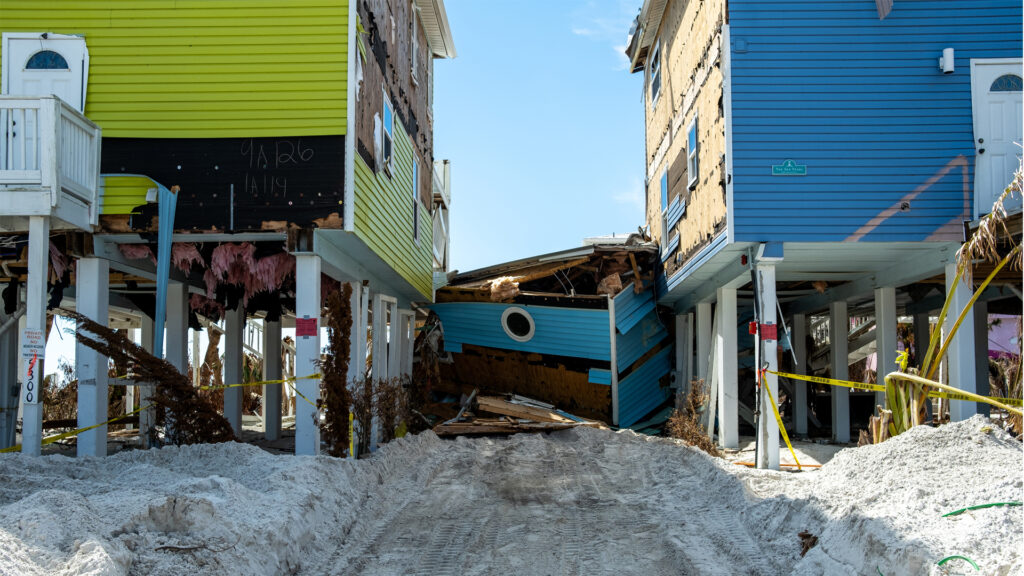By Bob Inglis, republicEn.org
Thirty percent of Americans live along the coast — and it’s easy to understand why. Proximity to the beach, ocean vibes, sunsets that seem filtered and a less pressure-cooked atmosphere contribute to the allure. But this flocking to the shore comes with risk and potential costs.
As Americans concentrate homes and businesses along the coasts, we concentrate the insurance risk in those areas vulnerable to sea-level rise, flooding and super storms. In no state is this more apparent right now than Florida, where more than a dozen insurance companies have cut their losses and moved out of the state, concentrating the already concentrated risk on even fewer companies.
The storms are expensive to the insurance companies, but it’s homeowners who pay the ultimate cost.

Massive payouts due to natural disasters like Hurricane Ian have left Floridians paying on average $4,200 per year for homeowners insurance. This is compared to the $1,500 average for the rest of the country. Floridians are left with fewer options, more expensive premiums and gut-wrenchingly small payouts that don’t begin to cover the cost of damages wrought by Hurricane Ian, the costliest storm to hit the state and second-most costly to hit the U.S. after Hurricane Katrina.
Many Floridians have had to switch to the state-run company, Citizens Property Insurance Corp., an entity created in 2002 as an insurer of last resort for those who couldn’t find coverage in the private market. Their policies have more than doubled in the last two years and now account for 13% of the state market.
Just in case the reader doubts the connection between insurance premiums and climate change, note that insurance companies are pricing in the risk. Their actuaries apparently all agree that climate change poses significant risk.
If they didn’t, perhaps a climate-change-disputing insurance company could cut their premiums and thereby pick up a whole lot of business in Florida. No company is pursuing that strategy. It’s pretty solid proof that the insurance industry is convinced that climate change is real.
The numbers make the case. Privately insured losses in Florida due to Hurricane Ian are estimated at $46-67 billion. Federal flood insurance claims have mounted to $10 billion. Of course, these insurance payouts have come only after homeowners have fulfilled their deductibles. And a news hurricane season is about to start.
It’s easy to highlight the problem, less easy to solve it. We can harden infrastructure and prepare for storms. Most logically, we should also reduce the risk of future sea level by innovating away from the fuels that cause warming. After all, rises in sea level are compounding the hurricane losses.
Another nearer-term solution: make some sites uninsurable. Build a McMansion on a barrier island, if you like, but don’t expect it to be insurable. If you lose it; you lose it. This would make insurance more affordable for people building more modest homes in less prone locations.
We’ve taken out “insurance policies” on environmental risks in the past, and those policies have paid off. In 1985, a junior scientist noticed something peculiar. Jonathan Shanklin was a researcher at British Antarctic Survey when he found what he first thought was an anomaly; inputting a backlog of data, he discovered that the ozone layer, which he presumed would be the same year after year, had started thinning. He shared his findings with the scientific community, who raised the alarms. Something urgent and effective needed to be done globally about ozone-depleting substances.
That’s when two, conservative leaders shined. U.K. Prime Minister Margaret Thatcher and President Ronald Reagan decided to act. Prime Minister Thatcher was a research chemist. President Reagan had been persuaded by his secretary of state, the late George Shultz, that it made sense to “buy an insurance policy” against the risk posed by the ozone hole.

Shultz told Reagan that it wasn’t 100% certain, but that there was clearly a risk. That risk, Shultz said, need an insurance policy. The result was the Montreal Protocol, the popular and effective international treaty, ratified in 1987, that continues to this day to repair the ozone hole.
It’s too late to buy fire insurance when your house is on fire or when a hurricane is bearing down. It’s not too late, though, to address climate change and to tame the forces that are creating the more expensive storms. That’s an environmental policy that would ultimately have an impact on Floridian’s insurance policies.
Former U.S. Rep. Bob Inglis (R-South Carolina, 1993-1999 and 2005-2011) is the executive director of republicEn.org, a community of conservatives who care about climate change. Inglis will be speaking May 17 to the Rotary Club of Hialeah-Miami Springs and May 18 to the Rotary Club of Coral Gables.
Sign up for The Invading Sea newsletter by visiting here.



